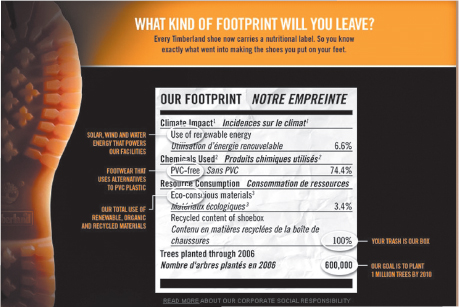Examining Ethics
EXAMINING ETHICS
What Does It Mean to Be Green?
Back in the 1930s, public relations pioneer Edward Bernays labored behind the scenes to make green a more fashionable color. Why? Bernays was working to change women’s attitudes toward the forest green packaging of his client Lucky Strike’s cigarettes so women would smoke them.
Today, public relations professionals are openly working on behalf of clients to promote a different kind of “green”–environmentally sustainable practices. The idea of green practices goes back at least as far as the very first Earth Day, April 22, 1970, which marked the beginnings of the modern environmental movement. The term “green” as a synonym for being environmentally conscious was inspired by Greenpeace, the international environmental conservation organization founded in 1971, and by the similar political ideology that gained roots in Europe and Australia in the 1970s that prized ecological practices, participatory democracy, nonviolence, and social justice.

Corporations in the United States and elsewhere began adapting to the changing culture, integrating environmental claims into their marketing and public relations. But it wasn’t always clear what constituted “green.” In 1992, the Federal Trade Commission first issued its “Green Guides,” guidelines to ensure that environmental marketing practices don’t run afoul of its prohibition against unfair or deceptive acts or practices, sometimes called “greenwashing.” As concern about global warming has grown in recent years, green marketing and public relations now extend into nearly every part of business and industry: product packaging (buzzwords include recyclable, biodegradable, compostable, refillable, sustainable, and renewable), buildings and textiles, renewable energy certificates and carbon offsets (funding projects to reduce greenhouse gas emissions in one place to offset carbon emissions produced elsewhere), labor conditions, and fair trade.
Although there have been plenty of companies that make claims of “green” products and services, only some have infused environmentally sustainable practices throughout their corporate culture. In the United States, the New Hampshire–based footwear and clothing company Timberland has been a model for green practices and PR. In 2008, Timberland released a short- and long-term plan for corporate social responsibility performance covering the areas of energy, product, workplace, and service that represent the company’s material impacts. Timberland’s plan is particularly noteworthy in that it reports its key corporate social responsibility indicators quarterly (not just once a year) and encourages a two-way dialogue with its stakeholders using social media platforms.
Ultimately, green PR requires a global outlook, as sustainability responds to issues of an increasingly small planet. There are now more than 10,000 corporations in 145 nations belonging to the United Nations Global Compact, a strategic policy initiative launched in 2000 for businesses to align their operations and strategies with ten universally accepted principles in human rights, labor, environment, and anticorruption. Still, the move toward sustainable business practices has a long way to go, as there are more than six million business firms in the United States alone.
The good news for sustainability and green public relations is that executives around the world are embracing the concept. A study by the UN Global Compact in 2011 revealed that 93 percent of 766 CEOs surveyed believe that sustainability will be “important” or “very important” to the future success of their company.1
Yet, putting sustainability ideas into practice is more difficult. The 16th Annual Global CEO Survey in 2013 found that only 43 percent of U.S. CEOs (and 48 percent of global CEOs) reported that “reducing environmental footprint” would be a priority in the coming year.2 